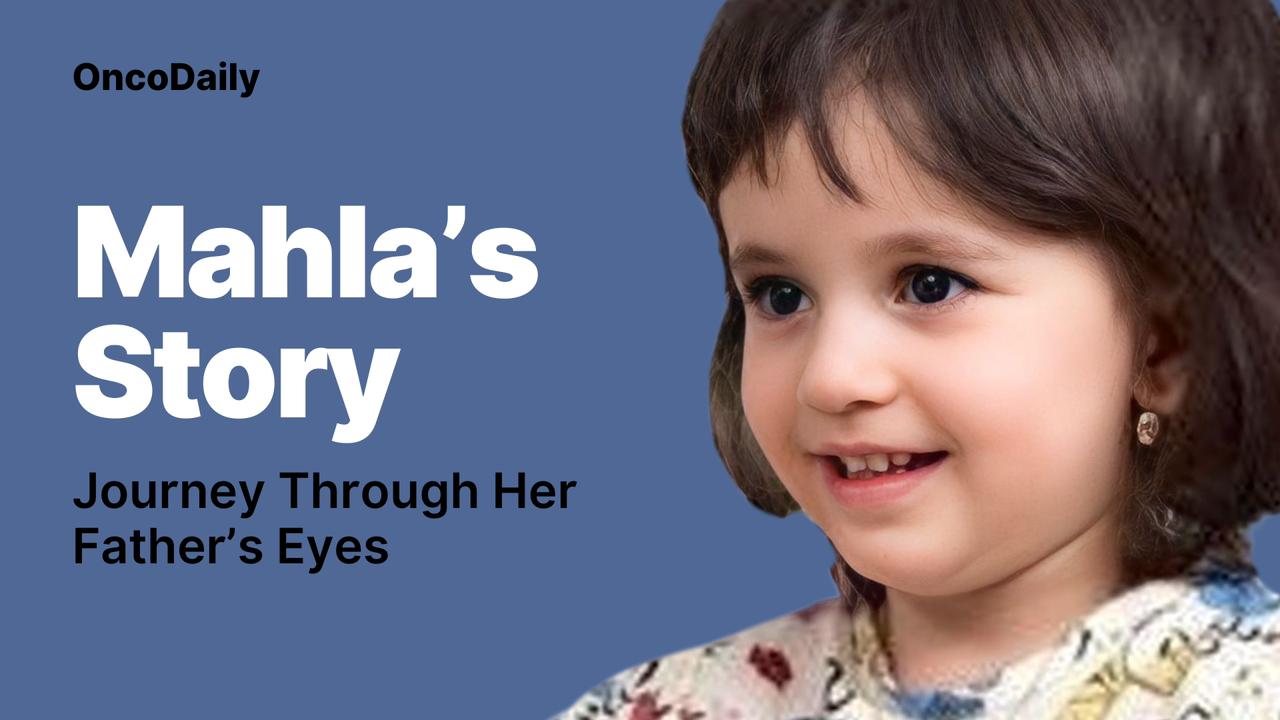On the late April 2022, less than a month before Mahla’s third birthday, she complained of a headache for the first time – an unexpected phrase she never repeated, yet it left us bewildered: How could a child so young articulate pain so clearly? Ten days later, the first episodes of morning vomiting began, accompanied by anorexia, food aversion, and refusal to eat. Despite her mother’s medical expertise and the administration of antiemetics and antiflatulents, the nausea persisted, each episode marked by severe leg tremors and profound terror in Mahla’s eyes. Even holding her brought no comfort; she seemed to lose her balance, her gaze shadowed by fear. Recurrent constipation compounded her suffering.
Diagnostic Odyssey
Consultations with pediatricians yielded transient diagnoses like “viral infection.” Even a referral to a pediatric oncologist colleague proved futile. Mahla grew weaker by the day, eventually losing the ability to maintain balance even while sitting. A pediatric gastroenterologist prescribed allergy medications, while another physician recommended an endoscopy under general anesthesia. A pediatric neurologist diagnosed “abdominal migraine,” yet Mahla’s dysphagia worsened relentlessly.
Dark Days in the Hospital
Finally, on late June 2022, after consulting another neurologist who could not provide a definitive diagnosis, we rushed Mahla – lethargic, hypotonic, and dehydrated – to a specialized children’s hospital in Tabriz. Following IV fluid administration, she suddenly seized, prompting an emergency CT scan. The devastating truth was revealed: a cerebellar mass with mass effect and obstructive hydrocephalus, necessitating urgent surgical resection and intracranial pressure management. Our lives collapsed in a single night.
Surgery and Treatment Complexities
The on-call neurosurgeon at a university hospital in Tabriz ordered an emergency MRI with and without contrast, followed by tumor resection. However, neurosurgery residents persuaded us to transfer to a private hospital, where the surgery was performed without an MRI. Though the resection was successful, cerebrospinal fluid (CSF) pressure remained critically high, requiring a ventriculoperitoneal (VP) shunt placement after eight days in the ICU. Discharged without follow-up imaging, we were referred to pediatric oncology.
Given my wife’s medical background and my own biomedical research experience, we sought a second neurosurgical opinion. A repeat MRI revealed cervical spinal metastasis – missed preoperatively. The final pathology confirmed cerebellar medulloblastoma, later subtyped as Group IV.
Treatment Journey to Tehran
After consulting pediatric oncology and radiation oncology specialists in Tehran, we relocated for complex care. Due to Mahla’s young age (3 years) and borderline status, high-dose chemotherapy was prioritized over immediate radiotherapy to mitigate neurocognitive sequelae. Molecular pathology testing was conducted for subtyping, which indicated Medulloblastoma of Group IV.
Twenty days post-resection, chemotherapy began at a Tehran university hospital. Sourcing quality medications amid sanctions was arduous; her oncologist refused to administer substandard cyclophosphamide from Southeast Asia.
Tragically, Mahla contracted COVID-19 after Cycle 1, spiking fevers and tachycardia. Fungal tests were negative, but hydrocephalus raised concerns about shunt malfunction. An unnecessary surgical exploration confirmed shunt patency. With depleted venous access, a port catheter was placed – but the surgeon’s excessive pressure caused transient cardiac arrest. Miraculously, she survived.
Post-COVID CSF cytology showed no malignant cells, suggesting favorable prognosis.
Return to Tabriz and Gradual Decline
Logistical challenges (drug shortages, COVID-19, port complications) forced our return to Tabriz. Despite prior agreements, the new oncologist deviated from the Tehran protocol. Though meticulous, his knowledge lagged; he was unaware of molecular subgroups (e.g., Group IV vs. III prognoses).
After four chemotherapy cycles, Mahla lost speech (December 2022). Post-resection, she had never regained mobility – an unexplained deficit. Her oncologist suspected relapse, but MRI showed no significant changes. No further action was taken. Two months later, a pediatric neurologist reviewed the scans and confirmed disease progression.
By April 2023, seizures necessitated ICU admission and sedation. CT/MRI revealed extensive leptomeningeal dissemination. A final, futile chemotherapy cycle preceded palliative radiotherapy referral to MAHAK Hospital in Tehran.
The radiation oncologist declared even palliative radiotherapy impossible due to widespread disease. We brought Mahla home, weeping and in pain. One week later, on May 20, 2023, at 10:20 PM, she took flight to the heavens.
This agonizing journey was marred by:
- Initial surgery without MRI, delaying metastatic detection and timely VP shunt placement.
- Absence of neuropathologists in most Iranian cities for molecular subtyping.
- Drug shortages due to sanctions, compromising treatment efficacy.
- Poor interdisciplinary coordination and lack of pediatric CNS tumor specialists.
- Inadequate family counseling on treatment risks and procedures.
- We knew Mahla’s disease was high-risk, but we never expected to lose her just 11 months post-diagnosis. Better management might have extended her life and quality of survival. Now, only her memory pulses in our hearts. We hope her story illuminates the urgent need for healthcare reform in Iran and beyond.
By Abbas Karimi, PhD
Associate Professor in Molecular Medicine and Mahla’s father
Medulloblastoma: Breakthroughs in Types, Symptoms, Diagnosis, Treatment, and 2025 Advances in Care

